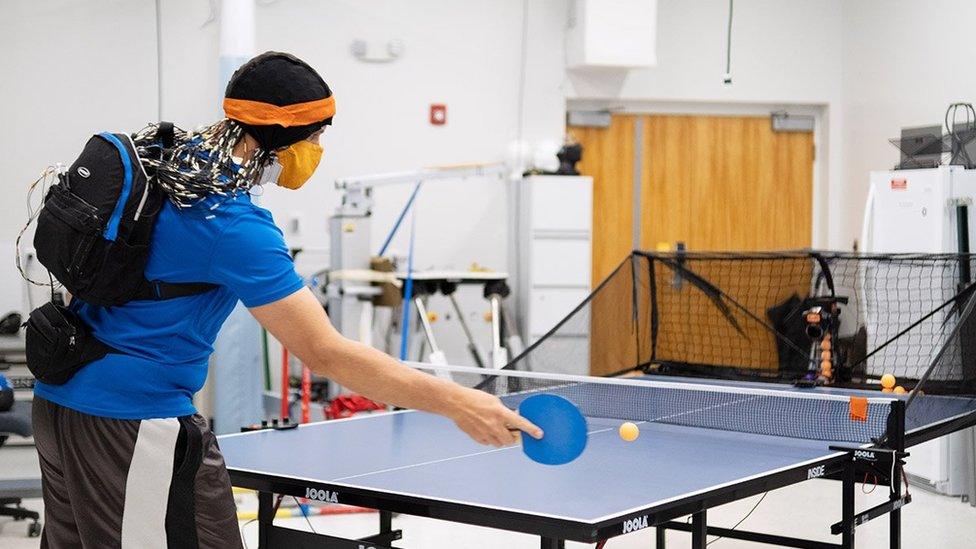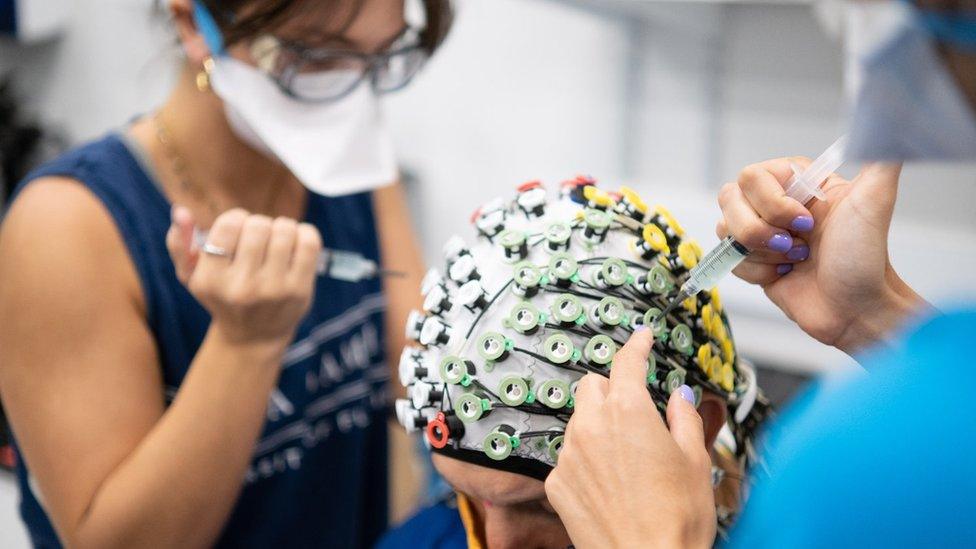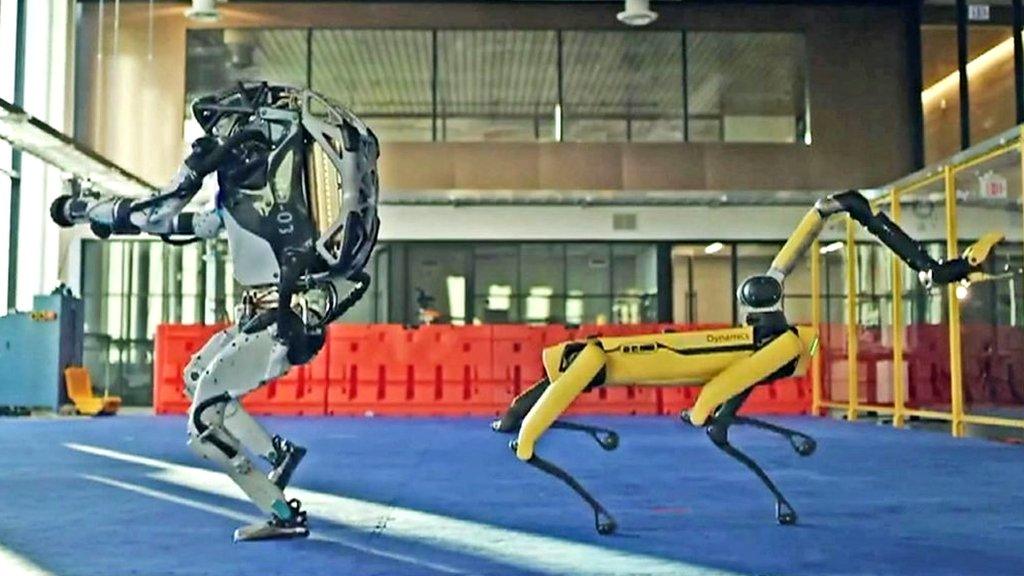Robots: Do you work harder when competing against them than other humans?
- Published
- comments

The human brain works much harder when playing sport against robots than against other people.
That's what scientists from the University of Florida have found, after analysing footage from dozens of hours of table tennis matches.
They discovered that humans appeared more relaxed when playing one another, as using visual signs like when they are about to serve the ball, gave an understanding of the opponent.
But when they were playing against machines, which do not provide any cues about what they are going to do next, their brain to work harder.
Prof Daniel Ferris, one of the study authors, said: "Humans interacting with robots is going to be different than when they interact with other humans.
"Our long-term goal is to try to understand how the brain reacts to these differences."
The research has been published in the journal eNeuro.
How was the experiment carried out?

More than 100 electrodes capture fine detail of the brain activity of participants while they play a fast-paced game of table tennis
In the matches humans played against machines and each other, with the players wearing electrode caps so their brain activity could be monitored.
Scientists found that when playing against each other, the player's brain cells worked in unison, or synchronisation - "like they were all speaking the same language".
But when the players faced a ball-serving machine, the neurons - nerve cells - in their brains were not able to find his same harmony.
The brain was busy making calculations and predictions, trying to figure out when the ball would arrive.
This led to an enhanced state of expectation and attention, and meant that something called de-synchronisation took place.

Study author Daniel Ferris, a professor of biomedical engineering at the University of Florida, used the example of a crowd at a football match to try and explain the difference.
He said: "If we have 100,000 people in a football stadium and they're all cheering together, that's like synchronisation in the brain, which is a sign the brain is relaxed."
But he added: "If we have those same 100,000 people but they're all talking to their friends, they're busy but they're not in sync.
"In a lot of cases, that desynchronisation is an indication that the brain is doing a lot of calculations as opposed to sitting and idling."
Will humans find it easier to read robots in the future?
The researchers said that as robots grow more common and sophisticated, understanding how the human brain responds to an opponent's moves could allow engineers to design robots to behave more like us.
Amanda Studnicki, a graduate student at the University of Florida, who was part of the research team, said: "I still see a lot of value in practising with a machine.
"But I think machines are going to evolve in the next 10 or 20 years, and we could see more naturalistic behaviours for players to practise against."
- Published12 November 2018

- Published11 March 2018

- Published10 January 2021

